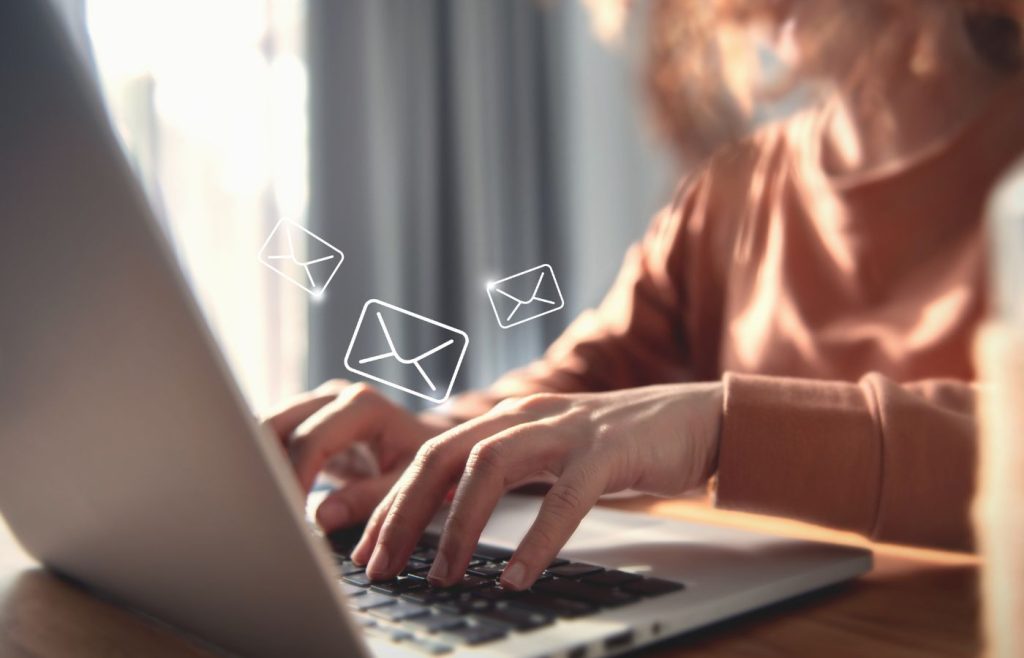Cold email outreach involves sending unsolicited emails to potential clients, employers, or partners with whom you have not interacted. Unlike spam, these emails are targeted, personalized, and intended to open professional dialogues.
The Significance of Cold Emails in Business
-
Building Professional Relationships:
Cold emails are a fundamental tool for networking. They allow you to introduce yourself to potential partners or clients, laying the groundwork for a relationship based on mutual business interests. By reaching out proactively, you can connect with decision-makers you might not meet otherwise, expanding your professional network significantly. -
Expanding Business Opportunities:
Through cold emails, businesses can reach a broader audience, tapping into new markets and opportunities. These initial emails often serve as the first step towards securing new clients, forming strategic partnerships, or even scouting for new talent. The ability to effectively communicate your value proposition and engage the recipient can significantly influence your business’s growth and reach. -
Cost-Effective Marketing Strategy:
Sending cold emails is a highly cost-effective marketing strategy. Unlike traditional advertising or more expensive digital marketing tactics, cold emails require only a well-crafted message and a recipient list. This method can provide a high return on investment, as it allows direct contact with potential leads without substantial upfront costs.
Why Cold Emailing Matters
In today’s digital age, the ability to craft effective cold emails can set you apart from competitors. It not only demonstrates your initiative but also highlights your company’s dedication to personal outreach. By mastering cold email outreach, you can enhance your business’s ability to forge new connections, explore untapped markets, and ultimately drive growth.
In conclusion, cold email outreach is not just about sending emails; it’s about opening doors to new possibilities through strategic, respectful, and targeted communication. It’s an invaluable skill in the arsenal of any business looking to expand its network and influence.
Understanding Your Audience
Identifying exactly who to email is the first crucial step in cold email outreach. The more precisely you can pinpoint your audience – including their industry, job title, and professional interests – the better you can tailor your messages to meet their needs and capture their attention.
How to Pinpoint Your Audience
-
Use LinkedIn: LinkedIn’s advanced search tools allow you to filter potential contacts by industry, company, job position, and even interests. This helps in creating a targeted list of individuals who are most likely to benefit from your product or service.
-
Explore Company Websites: Visit potential leads’ company websites to gather more specific information about their roles and responsibilities within the company. This information can be invaluable in personalizing further communications.
-
Industry Publications and Events: Engaging with industry publications and participating in professional events can also provide insights into potential leads who are actively involved in their fields.
Research Your Recipients
Researching your recipients goes beyond just knowing their names and titles. Understanding their business context, recent company achievements and the industry challenges they face can significantly enhance the relevance of your email, making it more likely to be well-received.
Strategies for Effective Research:
-
Read Recent News: Check the latest news relating to the recipient’s company to understand their current business climate. This might include new product launches, awards, or notable hires.
-
Analyze Their Business Website: Look at your recipient’s business services, client testimonials, and press sections to get a feel of their market standing and the language they use.
-
Use Social Media Insights: Social media platforms can provide personal insights into your recipients’ professional interests and achievements. LinkedIn, Twitter, and even industry-specific forums are good places to start.
-
Google Alerts: Setting up Google Alerts on the company or industry can keep you updated with real-time news, helping you stay relevant in your communications.
Crafting Your Message
Subject Line Strategies
The subject line is the first impression you make on your recipient, and it can determine whether your email is opened or ignored. An effective subject line should be compelling and give the recipient a reason to read your message.
Tips for Writing Great Subject Lines:
-
Be Clear and Concise: Use simple language that specifies the purpose of your email. Avoid vague descriptions.
-
Add a Personal Touch: Include the recipient’s name or a personal detail that relates to them directly.
-
Spark Curiosity: Without being clickbaity, make your subject intriguing enough that the recipient wants to know more.
-
Keep It Short: Aim for 50 characters or less so the entire subject line appears in the recipient’s inbox.
Examples of Subject Lines:
- “John, Improve Your Team’s Efficiency with Our Tailored Solutions”
- “Meet Your Next Business Solution Today”
- “Quick Question Regarding Your Book on Marketing”
- “Possible Collaboration? Let’s Explore Opportunities”
Email Opening
The opening of your email sets the tone for the message and is crucial in making a good first impression. Proper greetings and a polite introduction can make all the difference.
Greeting Your Recipient:
-
Use Their Name: Always address the recipient by their name (e.g., “Hi John,”).
-
Be Respectful: Use a polite and professional tone without being overly familiar.
Introduction Tips:
-
Reference Any Common Ground: Mention if you have met before, have mutual connections, or any recent events you both attended to remind them of who you are or create a connection.
-
Polite Introduction of Yourself: Briefly introduce yourself and your position to place context around the email.
Example opening:
“Hi John,
I hope this message finds you well. My name is Jane Doe, and I am the Marketing Director at XYZ Solutions. We recently connected briefly at the ABC Industry Conference last week.”
Body Content
The body of your email should be concise and to the point. It is where you introduce yourself, state your purpose, and explain how the recipient benefits.
Structuring the Email Body:
-
Introduce Yourself: Briefly state who you are and your role or connection to the recipient.
-
State Your Purpose Clearly: Clearly explain why you are reaching out and what you are proposing or asking for.
-
Explain the Benefits: Focus on how responding to your email can provide value to the recipient, whether it’s solving a problem, offering valuable information, or presenting an opportunity.
Example Body:
“Our company, XYZ Solutions, specializes in streamlining communication processes, and I believe your team at ABC Corp could significantly benefit from our customized solutions. We’ve helped companies like yours increase team productivity by up to 30% while cutting down on miscommunications.”
Call to Action
Your call to action should encourage your recipient to respond, engage further, or take a specific next step. It should be clear and easy to find.
Tips for Calls to Action:
-
Be Specific: Tell the recipient exactly what you want them to do next – call you, reply to the email, schedule a meeting, etc.
-
Create Urgency: Use language that encourages a timely response but avoids sounding desperate.
-
Make It Easy: Provide all the information or links necessary to take the next step.
Examples of Calls to Action:
“Could we schedule a 15-minute call next week to discuss this further? Please let me know what time works best for you.”
“Please reply to this email if you would like more detailed information on our solutions.”
“Visit our website to see all the services we offer, and let me know if you have any questions.”
Personalization Techniques
Using Cold Outreach Email Templates
Using a template for cold emails can streamline your outreach process and ensure consistency in your communications. However, the key to effective use of templates lies in customization.
How to Customize Email Templates Effectively:
-
Personalize the Greeting: Always use the recipient’s name. If possible, also include a title or a reference to their company.
-
Modify the Introduction: Adjust the introductory note to include specific references that relate to the recipient, such as commenting on a recent company achievement or mentioning a common connection.
-
Tailor the Content: Adapt the main body to address the recipient’s unique challenges or needs. Highlight how your offering specifically solves their problem.
-
Adjust the Call to Action: Personalize the call to action based on what action you want the recipient to take, such as requesting a meeting at a time convenient for them or asking for a specific type of feedback.
Customization at Scale
When sending emails to a large list, personalization can seem daunting. However, modern tools have made it easier to personalize emails at scale effectively.
Effective Tools Include:
-
CRM Software: Platforms like Salesforce and HubSpot allow you to integrate detailed customer data with your email tools, enabling personalized greetings, content adjustments, and tailored calls to action based on the data stored about each contact.
-
Email Marketing Tools: Services like Mailchimp and Constant Contact offer features that customize emails using dynamic content, which changes based on the recipient’s data.
-
Automation Platforms: Tools like Marketo and Pardot use behavioral triggers to send personalized emails based on actions that recipients take, making each email timely and relevant.
Follow-up Strategies
Follow-up emails are crucial in cold emailing, but need to be handled with care to avoid seeming pushy.
Key Strategies Include:
-
Timing Is Everything: Wait a few days after your initial email before following up. This gives the recipient enough time to respond, but keeps your message relevant.
-
Keep It Professional: Start with a polite reminder of your previous email, and briefly restate the value proposition.
-
Vary Your Approach: If the first follow-up email doesn’t get a response, consider changing your approach in the next one. This might involve offering additional information, a special discount, or access to exclusive content.
-
Limit Your Follow-ups: Generally, it’s advisable not to send more than three follow-up emails to the same recipient to avoid email fatigue and potential frustration.
Optimizing Email Timing and Frequency
The timing of your email can greatly impact its effectiveness. Sending it when your recipient is most likely to be checking their email increases the chances that your email will be opened and read.
Finding the Optimal Time:
-
Industry-Specific Trends: Different industries have different peak times. For example, emails sent to professionals in the financial sector are often best sent early in the morning on weekdays, while marketing professionals may be more receptive in the late mornings and mid-afternoon.
-
Mid-Week Advantage: Generally, Tuesday to Thursday sees higher open rates compared to Mondays (when people are catching up from the weekend) and Fridays (when people are winding down the week).
-
Time of Day: Mornings (around 9 AM to 11 AM) usually work best, as this is when people begin their day and check their emails. However, lunch hours (around 1 PM) can also be effective, particularly for mobile users.
Setting the Right Frequency:
The frequency of emails should be balanced to maintain engagement without overwhelming your recipients.
Guidelines for Frequency:
-
Initial Contact: After sending your first email, wait a couple of days to allow the recipient time to respond.
-
Follow-Up Emails: If there is no response, a follow-up email should be sent approximately 3-5 days later. This helps keep your correspondence top of mind without being intrusive.
-
Ongoing Communication: Limit follow-up emails to a series of three or four to avoid email fatigue. If you haven’t received a response after this, it may be best to pause and revisit the contact after a few weeks or months with new information or offerings.
Sequencing Emails for Different Recipients:
Customize the sequence of your emails based on the type of recipient and their behavior.
-
Engaged Recipients: For recipients who open and engage with your emails but haven’t responded, follow-ups can be more assertive, directly asking for a meeting or call.
-
Non-responsive Recipients: For those who don’t open your emails, consider changing the subject line or email content in follow-ups to spark their interest. Perhaps the initial message did not resonate, and a different angle or offer is needed.
-
Past Clients: Reaching out to past clients? Space out your emails more generously to keep in touch without seeming pushy, perhaps touching base every quarter or bi-annually.
Example Email Sequences:
-
Initial Email: Introduction and value proposition.
-
First Follow-Up (3 days later): Reminder of the initial email, with emphasis on how your offering can benefit the recipient.
-
Second Follow-Up (5 days after the first): A new angle or additional information that might appeal to the recipient, possibly including a small discount or exclusive offer as an incentive.
-
Final Attempt (1 week after the second): A polite final reach out, acknowledging their busy schedule and expressing your willingness to contact them at a later date, with a different approach or new information.
Analyzing and Improving
Metrics to Monitor
Key Performance Indicators (KPIs) for Cold Emails:
To understand how effective your cold email campaigns are, monitoring specific metrics is crucial. These indicators will not only tell you about the success rate of your emails but also provide insights into areas that may need improvement.
Essential Metrics Include:
-
Open Rate: This measures the percentage of recipients who open your email. A low open rate typically suggests that your subject lines may not be compelling enough to grab attention.
-
Response Rate: The percentage of recipients who reply to your email. This metric is crucial as it directly relates to the effectiveness of your email’s content and call-to-action (CTA).
-
Click-Through Rate (CTR): If your email includes links (to your website, a promotional offer, etc.), the CTR will measure how many recipients clicked on those links. This is particularly useful for gauging interest levels and the appeal of your offered content or deals.
-
Conversion Rate: The percentage of email recipients who take a desired action beyond clicking through, such as making a purchase or signing up for a service. This metric is key to determining the ROI of your email marketing efforts.
-
Bounce Rate: The rate at which your emails are rejected by the recipients’ email servers. A high bounce rate might indicate that your email list contains many invalid addresses.
How to Interpret These Metrics:
-
Compare your metrics against industry benchmarks to gauge performance.
-
Use A/B testing (comparing two versions of an email to see which performs better) to experiment with different subject lines, content formats, and CTAs to see what resonates best with your audience.
-
Observe trends over time — for example, if open rates decrease, it might be time to refresh your subject line strategy.
Using Analytics Tools
Tools for Enhancing Email Campaigns:
Several tools can provide detailed analytics for your cold emails, helping you track performance and make informed decisions.
Popular Email Analytics Tools Include:
-
Google Analytics: While primarily used for website analytics, Google Analytics can also track email campaigns by setting up goals and tracking conversions from email links.
-
Mailchimp: Known for its email marketing services, Mailchimp offers extensive analytics features, including open rates, CTRs, and detailed subscriber activity.
-
HubSpot: This CRM platform includes powerful email marketing and analytics tools, which allow you to see detailed reports on email interactions alongside other customer data.
-
Constant Contact: Similar to Mailchimp, this tool provides insights into who is opening your emails, what links they are clicking, and other actions they are taking.
-
Yesware: This tool is ideal for sales professionals, as it tracks email opens, link clicks, and attachment opens, and provides these insights right within your email client.
How to Use These Tools Effectively:
-
Set Clear Goals: Before launching a campaign, know what you want to achieve (e.g., a specific open rate or number of conversions).
-
Monitor Regularly: Check your email analytics regularly to spot trends, dips in performance, or areas needing improvement.
-
Integrate with CRM: If using a tool like HubSpot, integrate your email analytics with your CRM to get a holistic view of how email interactions contribute to your sales pipeline.
Legal and Ethical Considerations
Is Cold Emailing Illegal?
Clarify the legalities of cold emailing, referencing the CAN-SPAM Act in the U.S. and GDPR in Europe, ensuring marketers send emails legally.
Ethical Practices
Stress the importance of ethical practices in cold emailing, such as transparency, respecting privacy, and providing an easy opt-out mechanism.
Conclusion
Recap of Key Strategies
In this blog, we’ve explored several essential strategies to effectively enhance your cold emailing efforts. Here’s a brief recap:
-
Understanding Your Audience: Start by accurately identifying and researching your target audience to ensure your message is as relevant and personalized as possible.
-
Crafting Your Message: Use compelling subject lines and structured content to grab attention and convey your message clearly. Personalize your emails to resonate with each recipient.
-
Personalization Techniques: Utilize templates wisely by customizing them to fit the individual recipient’s profile, which helps in scaling your outreach without losing a personal touch.
-
Optimizing Timing and Frequency: Send emails at times when they are most likely to be read, and follow up intelligently to maintain engagement without overwhelming your recipients.
-
Analyzing and Improving: Continuously monitor key metrics such as open rates and response rates. Use these insights to refine your strategies and improve the effectiveness of your campaigns.
The Importance of Continuous Learning
Cold email outreach is not a “set it and forget it” strategy. It requires ongoing adjustments and optimizations based on performance data and recipient feedback. The digital landscape and technologies evolve, and so should your tactics. Regularly testing and updating your approach will help you stay relevant and effective in your outreach efforts.
Partnering with Experts
While the above tips provide a strong foundation for conducting cold email outreach, partnering with a marketing agency like Boost Media Group can amplify your results. Boost Media Group specializes in cold email strategies, combining industry expertise with advanced analytics to craft campaigns that achieve higher engagement and conversion rates.
Working with a specialized agency can provide you with:
-
Expertise and Experience: Tap into specialized knowledge and proven strategies that only experts can offer.
-
Advanced Tools and Technologies: Leverage the latest in email marketing technology and data analytics for more precise targeting and higher efficiencies.
-
Scalability: Efficiently scale your outreach efforts with a partner who can manage the complexities of larger campaigns.
By following the strategies discussed and continually refining your approach based on analytics, you can significantly enhance the effectiveness of your cold email outreach.
Remember, the goal is to build relationships and open lines of communication that lead to successful business outcomes. Partnering with an expert like Boost Media Group can help you navigate this journey more effectively, ensuring that your cold outreach efforts lead to optimal results. Contact us today for a FREE consultation to elevate your marketing strategies to new heights
Frequently Asked Questions
1. What is cold email outreach?
Cold email outreach is sending personalized emails to people you haven’t contacted before to start a professional conversation. It’s different from spam because it’s targeted and relevant.
2. Why is cold emailing important for businesses?
Cold emailing helps businesses grow by reaching new people, building connections, and finding new opportunities, all at a low cost.
3. What makes a cold email effective?
A good cold email has:
- A catchy subject line.
- A friendly greeting and introduction.
- A clear message that explains why you’re reaching out.
- A simple request for the recipient to take action, like scheduling a meeting.
4. How can I personalize cold emails when sending many?
Use tools like CRMs (e.g., HubSpot) or email services (e.g., Mailchimp) to personalize each email automatically, adjusting the greeting and content based on what you know about the recipient.
5. What legal rules should I follow when sending cold emails?
Make sure to:
- Collect email addresses legally.
- Offer an easy way for people to opt out of future emails.
- Be honest and respectful in your messages, following privacy laws like CAN-SPAM and GDPR.




